VidIQ and TubeBuddy are two of the most popular YouTube optimization tools.
Although both are amazing tools– one might be better suited for you than the other.
In this post, I’ll share my experience using both to help you choose what’s a better fit for your channel.
VidIQ & TubeBuddy Overview
VidIQ
VidIQ gives you detailed keyword data, competitor insights, and a host of SEO metrics to optimize videos and help YouTube creators like you grow your channel.
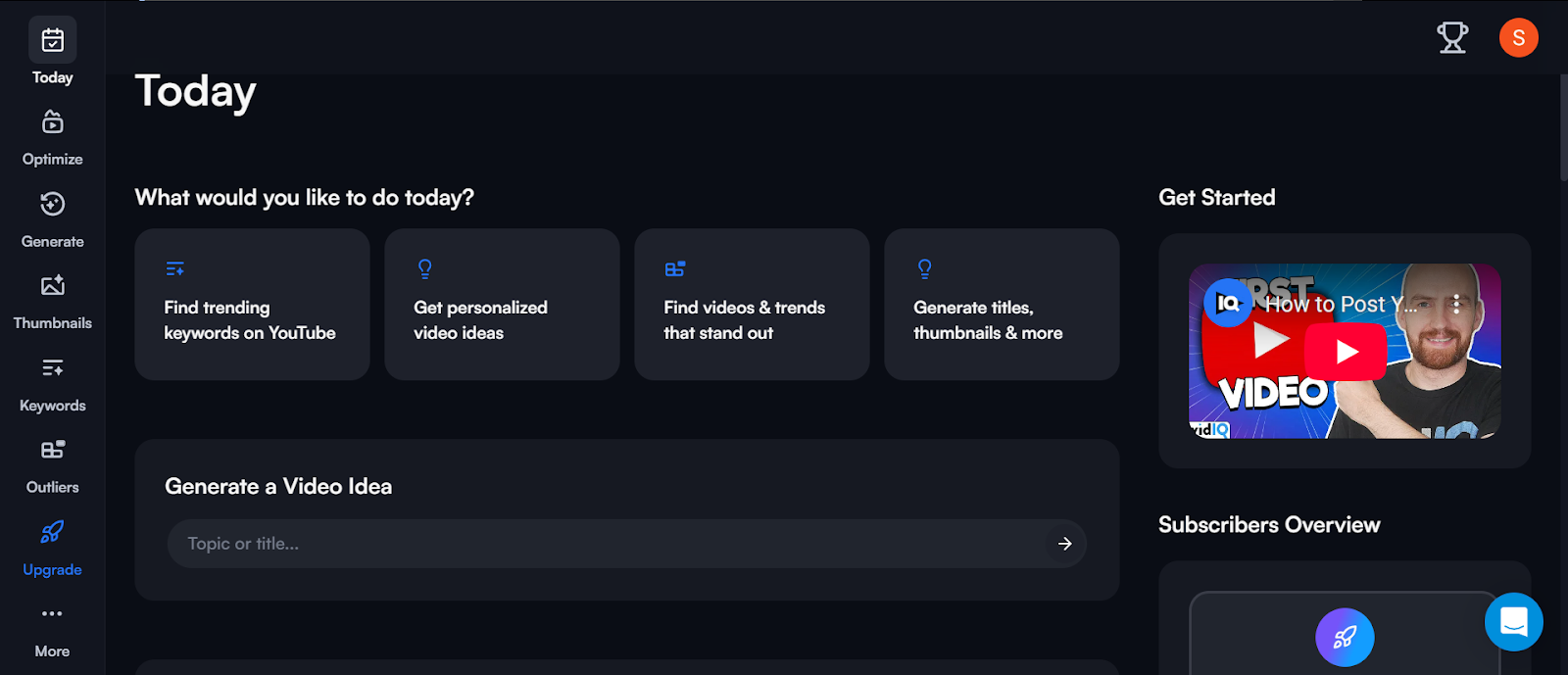
Key features:
→ Keyword research with metrics like search volume, competition, and overall score.
→ Competitor analysis that digs into trending topics and channel performance.
→ Video SEO recommendations and channel audits.
TubeBuddy
TubeBuddy is an all-in-one browser extension that integrates directly with your YouTube dashboard. It has a user-friendly design and offers extra optimization features.
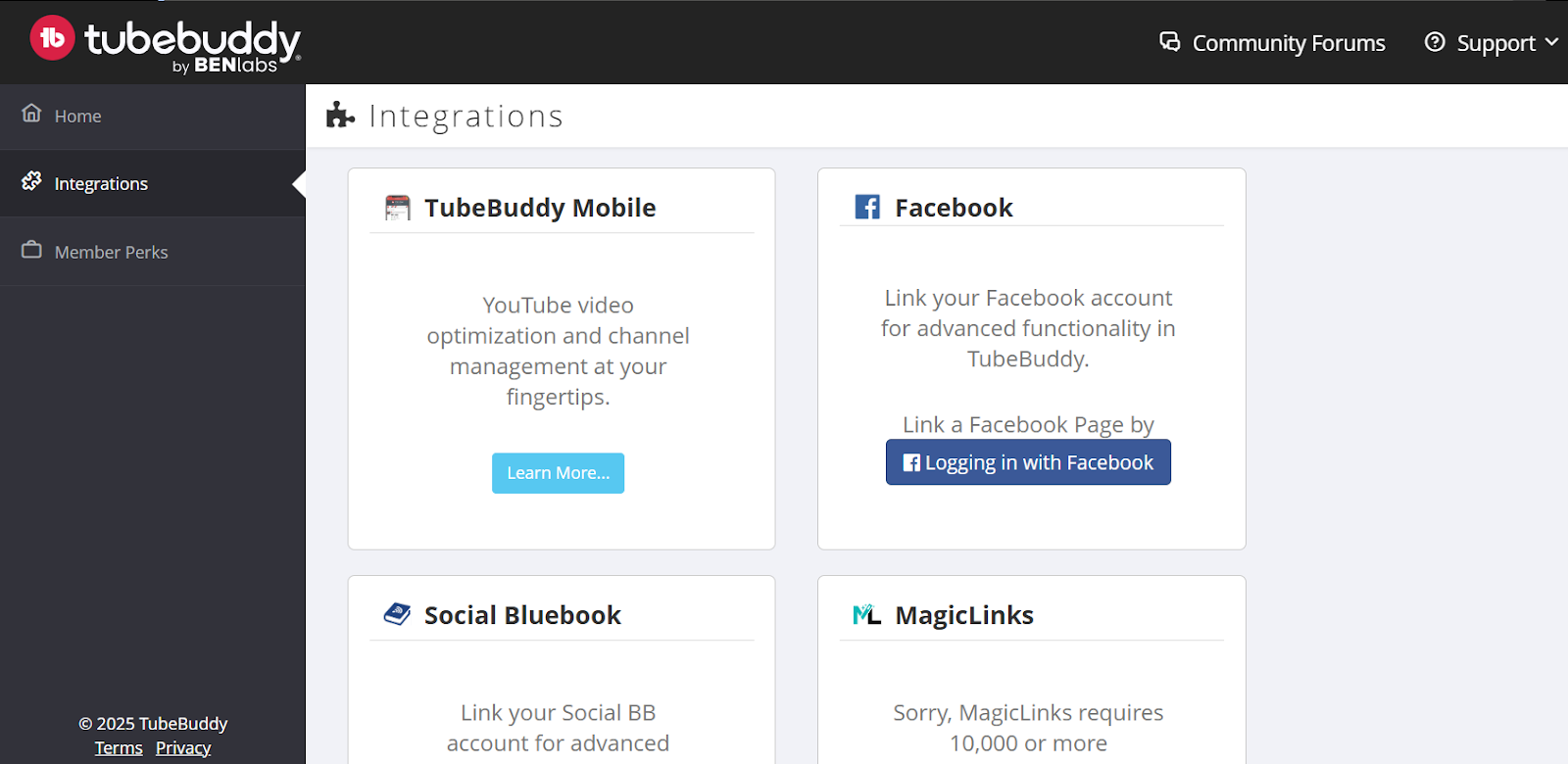
Key Features:
→ Bulk editing and SEO Studio tools that simplify video optimization.
→ Keyword research with weighted and unweighted scores.
→ A/B testing for thumbnails and titles.
VidIQ Vs TubeBuddy – Quick Comparison
| Aspect | VidIQ | TubeBuddy |
|---|---|---|
| Keyword Research | → Detailed metrics (search volume, competition, comprehensive keyword scores) → Advanced competitor insights | → Dual scoring system (weighted & unweighted) → Related tag suggestions |
| Competitor Analysis | → In-depth competitor tracking with detailed data on top videos and keyword performance → Actionable insights to refine strategy | → Basic competitor insights for quick channel comparisons → Gives a quick overview |
| Video Optimization | → SEO scores and metadata suggestions for titles and descriptions → Precise recommendations for higher rankings | → A/B testing and SEO Studio features to optimize thumbnails, titles, and descriptions → Practical strategies to boost your CTR |
| Ease of Use | → Data-rich interface that displays detailed analytics clearly → May overwhelm beginners | → Integrates directly with YouTube Studio with a user-friendly, intuitive interface → Easy to use even for beginners |
| Pricing & Value | → Basic functions for free → Premium data insights at a higher starting cost of $24.50 | → More free features (than VidIQ) → Budget-friendly starting at $3.60 |
| Additional Features | → Channel audits and detailed competitor tracking → Advanced browser extension | → Productivity features like bulk editing, scheduling, and integrated email outreach → Mobile app and browser extension |
Detailed Comparison of VidIQ & TubeBuddy
Keyword Research Capabilities
VidIQ is my go-to for YouTube keyword research and planning. When you research a keyword, it gives you detailed metrics such as search volume, competition, and an overall keyword score. This level of detail makes it easy for you to decide which keywords are worth targeting.
Other than that, it makes finding keyword ideas easy.

And it provides keyword ideas in terms of Related keywords, Matching terms and Questions.
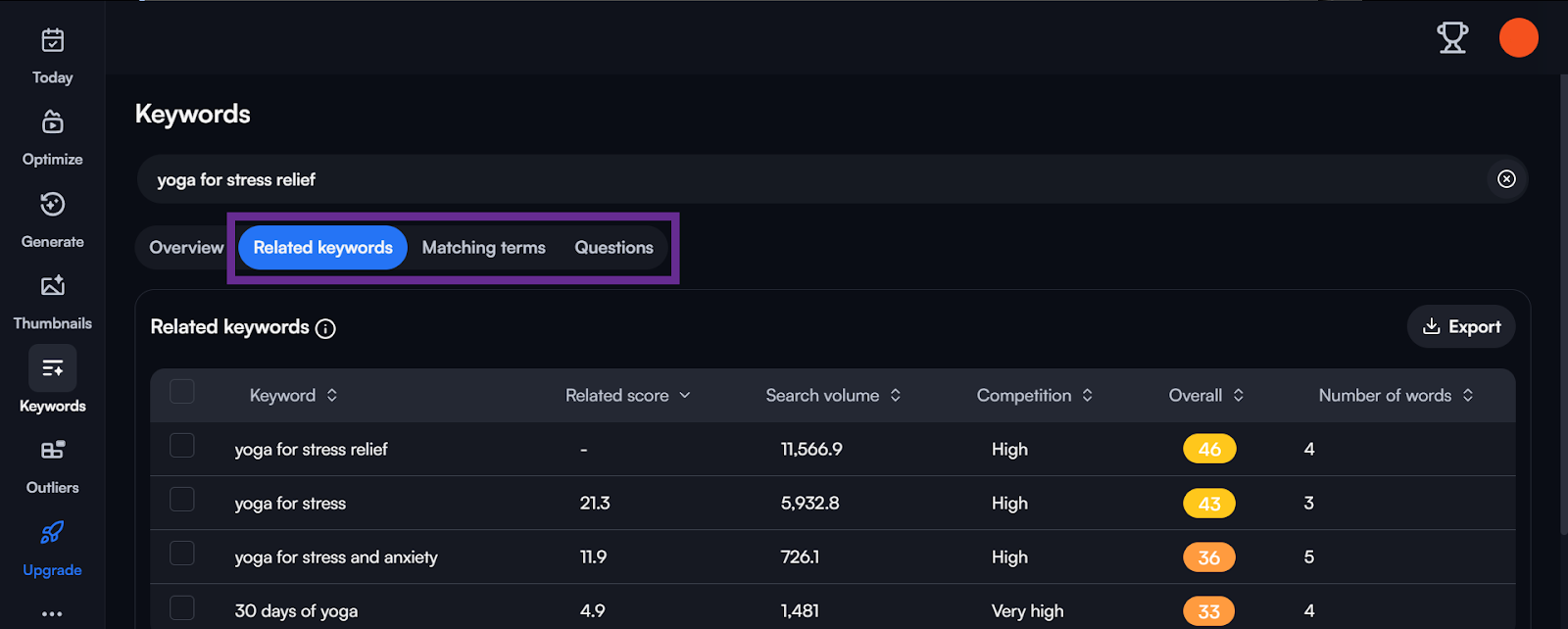
All suggestions come with important metrics like search volume, competition score, and overall score. It also gives you a Related score, which basically tells how relevant a certain keyword is to the one you input.

It also shows you the top keyword opportunities in your niche so you don’t miss creating content on important topics.

I also use VidIQ to find trending keywords in my niche so that I can hop onto any relevant trend ASAP and create a video about it while it’s still hot. This helps you stay ahead of your competitors.
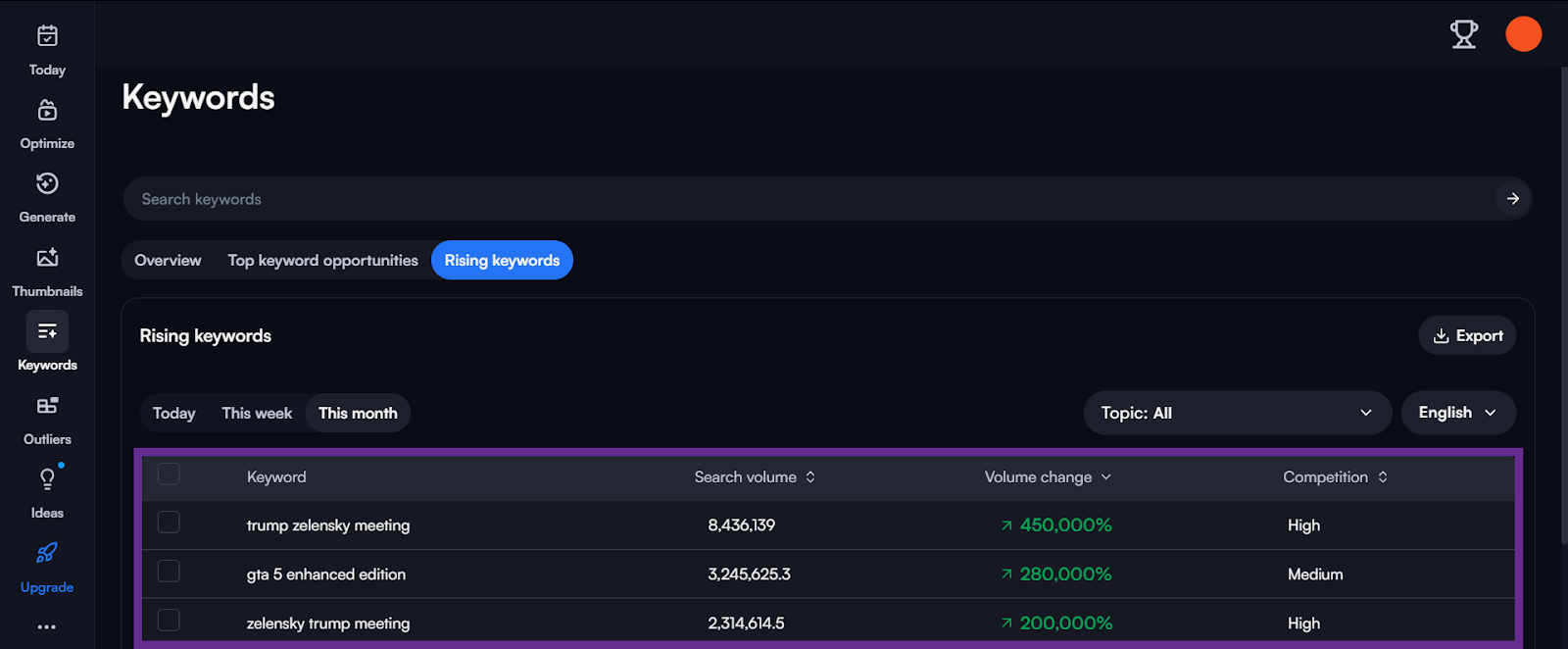
On the other hand, TubeBuddy offers a dual-scoring system. It provides both weighted and unweighted keyword scores.
The weighted score is based on your channel’s performance and the unweighted score offers a general view.
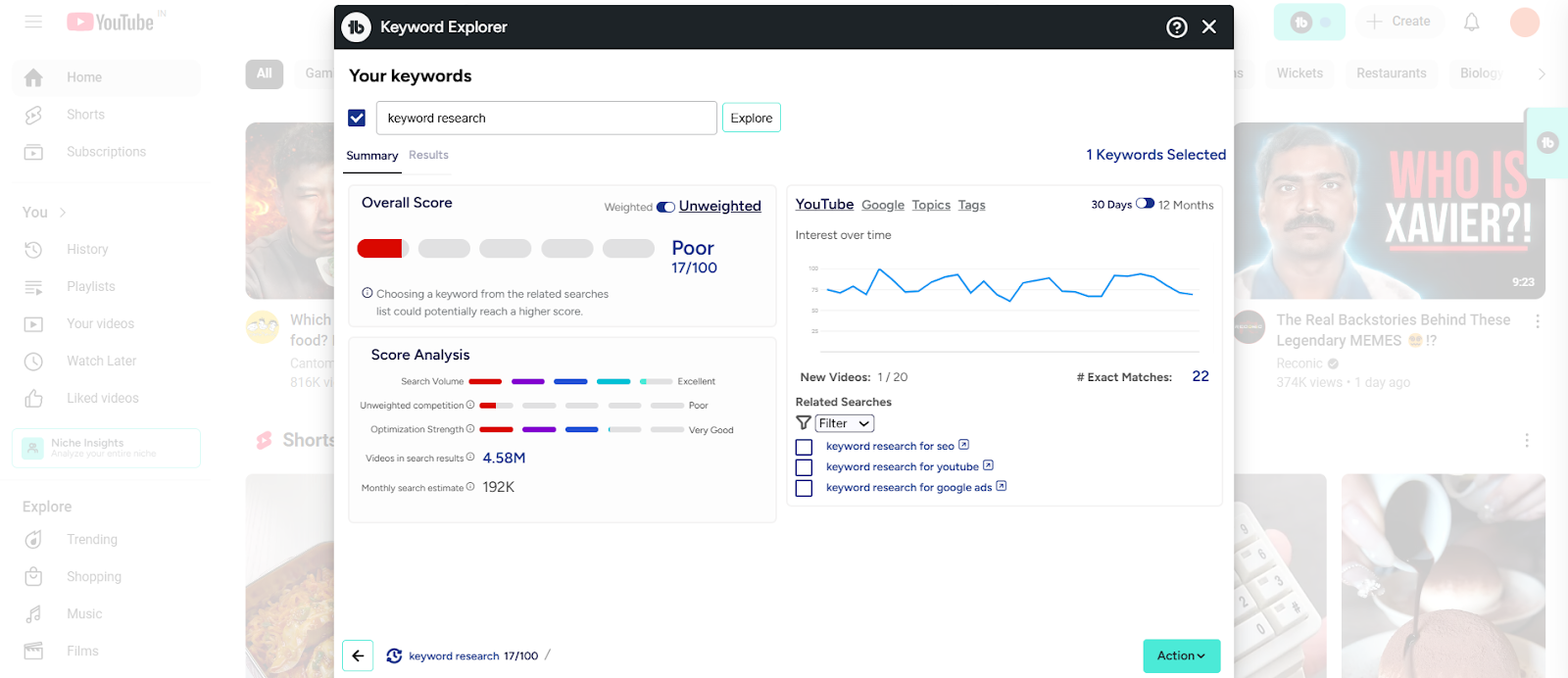
This system makes it very clear how strong a keyword is for your channel.
While it doesn’t give you a lot, its detailed Score Analysis shows you all the important metrics.
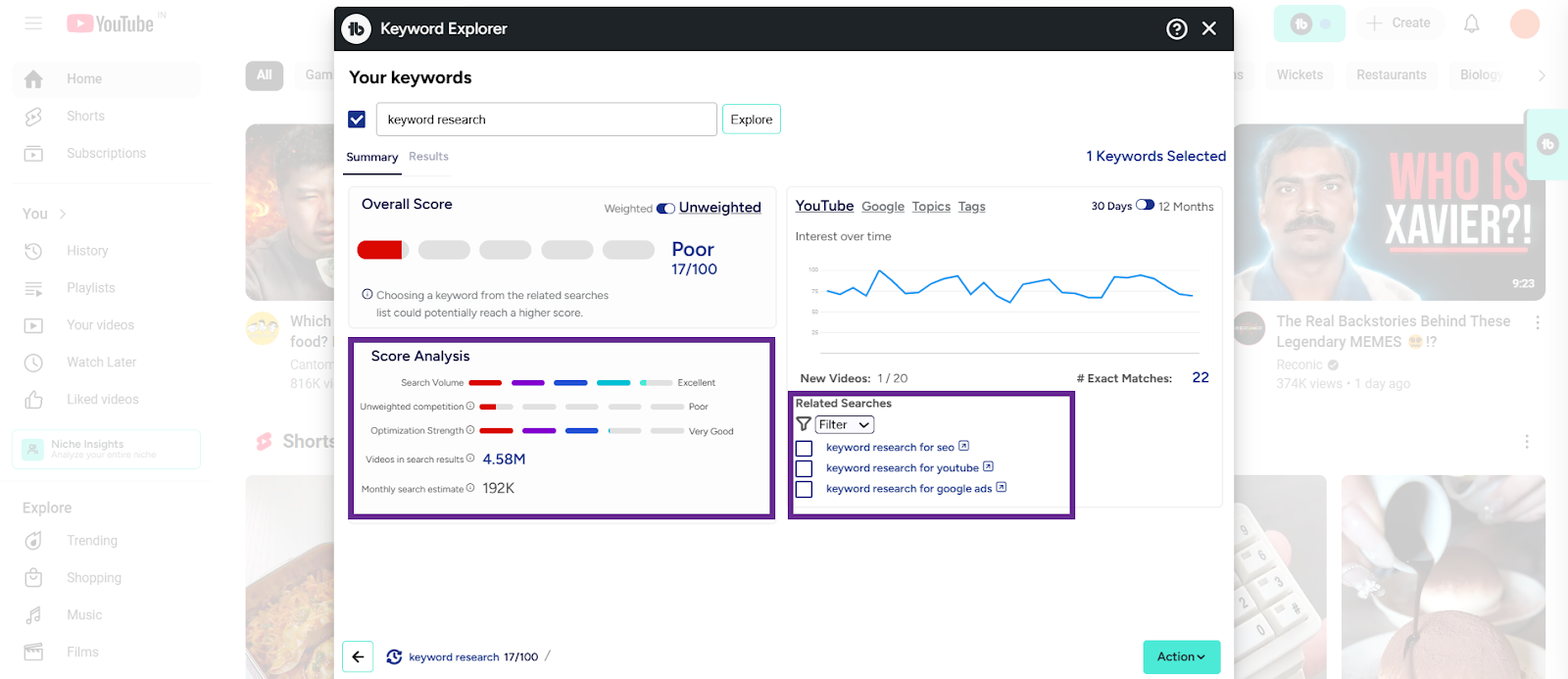
TubeBuddy also gives additional insights by suggesting related tags and offering a keyword description tool.
This extra context helps me better understand the potential of each keyword and makes the data more actionable for content planning.

I also love TubeBuddy’s simple interface and how it integrates directly into my YouTube Studio. So, you don’t have to go to a different tab when researching YouTube keywords.
Competitor Analysis
I often use VidIQ’s advanced competitor analysis to understand the market.
It shows you your competitors’ top videos, keyword performance, and trends over time– which is perfect for finding opportunities and spotting gaps in my strategy.
VidIQ also provides in-depth competitor data that lets you see which keywords are driving success for similar channels. This feature is incredibly useful for spotting opportunities.

TubeBuddy also offers competitor insights that help you compare performance visually. Although its data is not as detailed as VidIQ’s, it still gives enough information to understand where you stand. This basic competitor analysis really helps you track your overall performance.
Video Optimization and SEO Features
VidIQ gives you clear scores for video titles and descriptions. I also use it for its solid tag recommendations based on my keywords. This really helps you optimize your metadata.
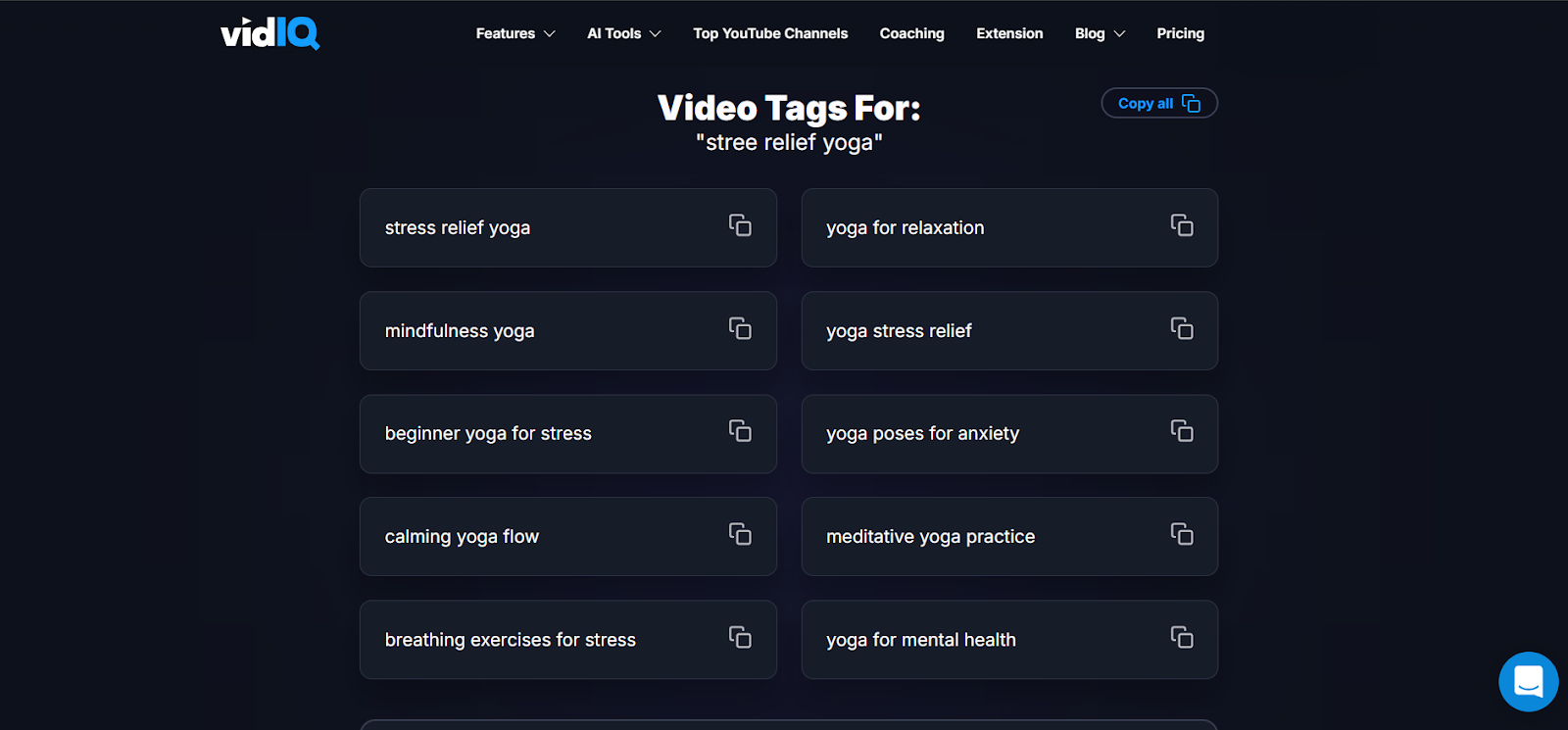
I also use TubeBuddy’s A/B testing to experiment with different thumbnails, titles, and descriptions. I love how its SEO Studio guides you step-by-step to optimize your content.
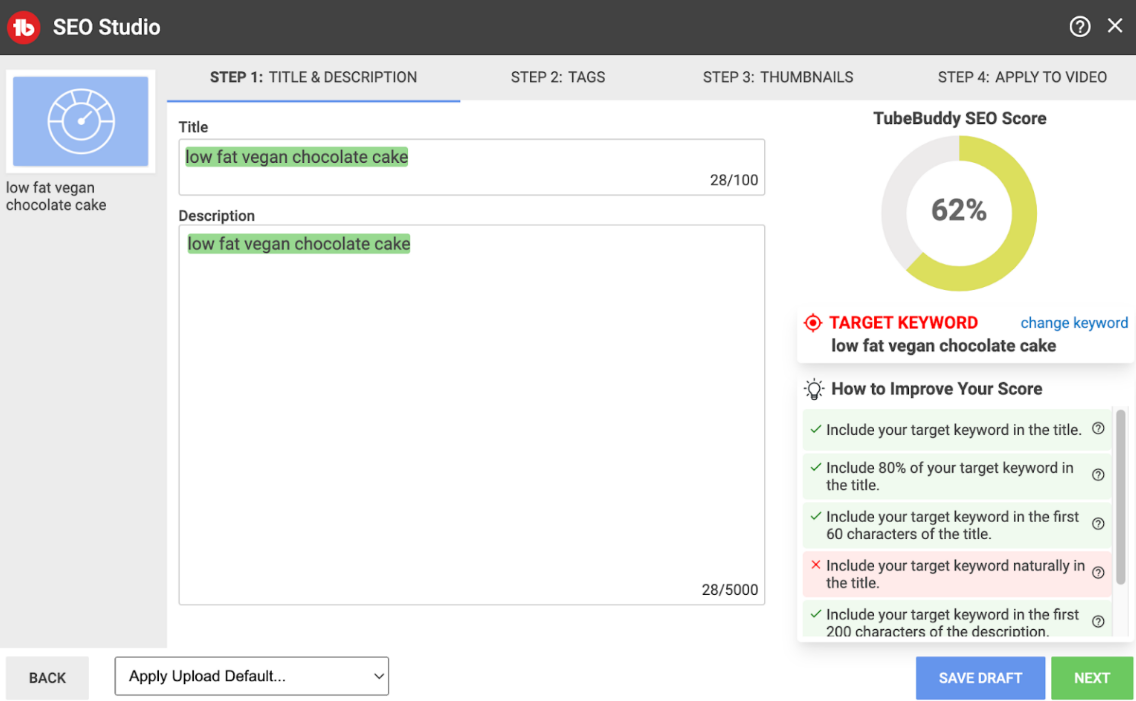
Ease of Use and Interface
VidIQ has a very sleek and data-rich interface. It shows detailed data through clean visuals. However, if you’re just starting, this depth of information might be a bit overwhelming at first.
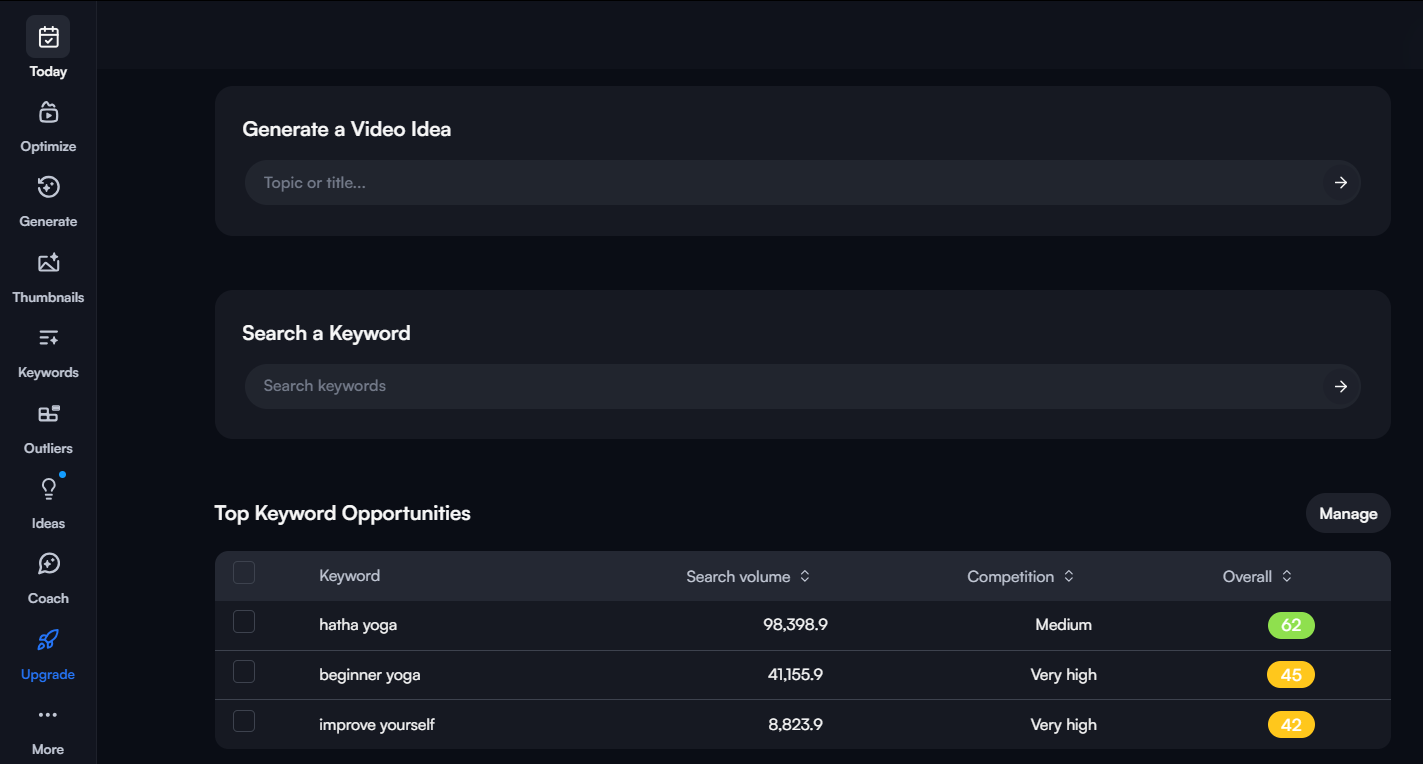
TubeBuddy, on the other hand, seamlessly integrates with your YouTube Studio.

I love how TubeBuddy keeps everything in one place. It really saves you a lot of time and helps you focus better on your content strategy.
If you are fairly new at creating YouTube content, you’ll love how easy TubeBuddy makes everything.
Browser Extensions
Both tools offer reliable browser extensions to help manage your YouTube right there.
I find VidIQ’s extension clean and fast. It gives you basic metrics and analysis of the YouTube SERP and videos.
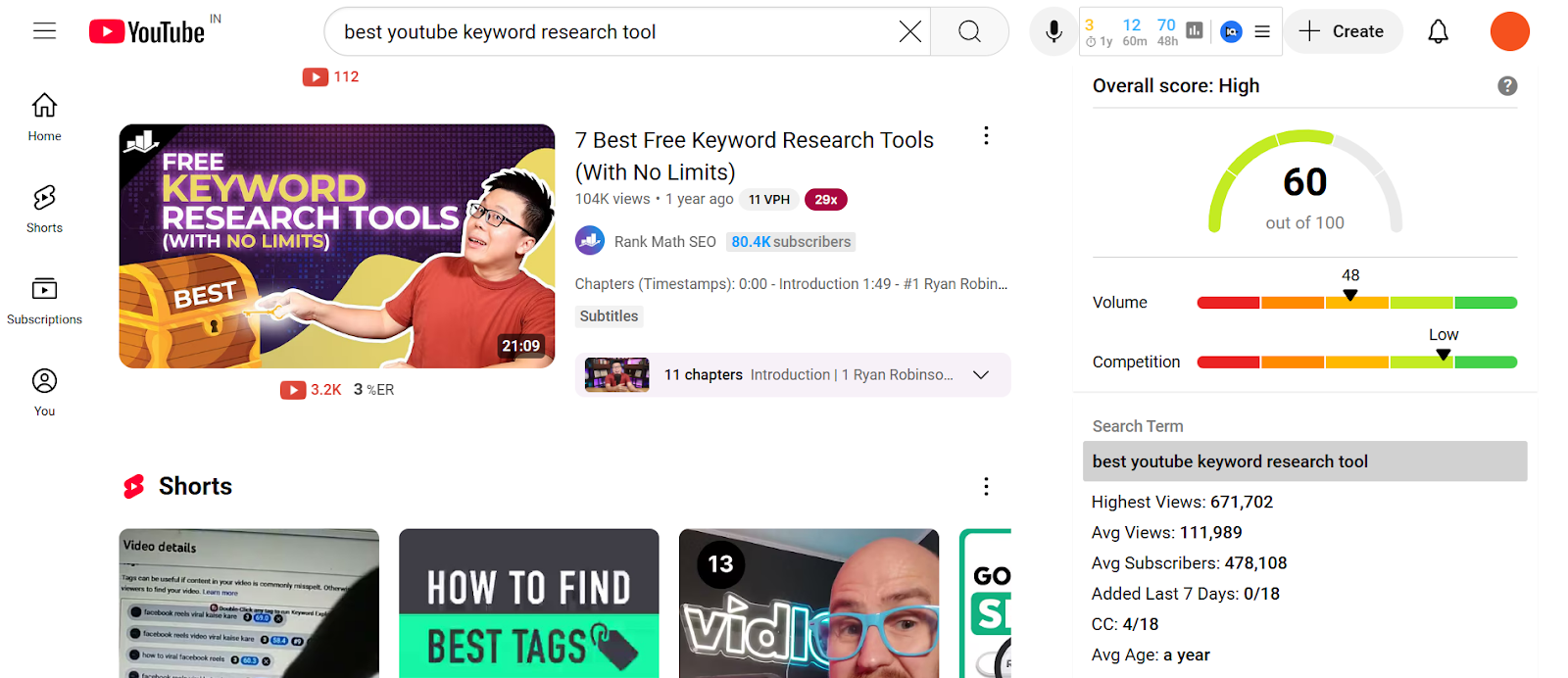
When you play a video, VidIQ also gives you important data to help understand its performance in terms of views, engagement, etc. I often use it to analyze my competitors’ videos.
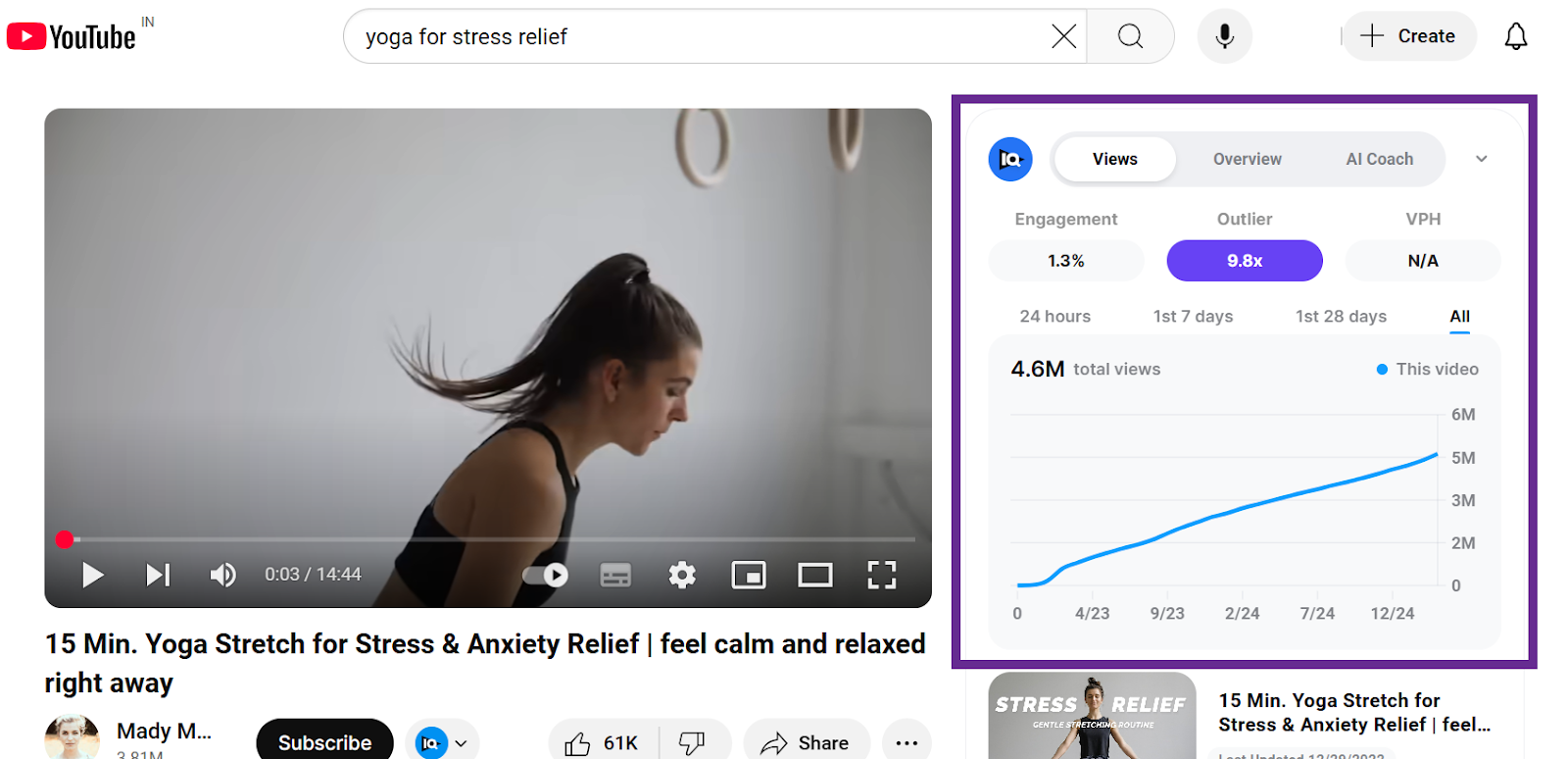
On the other hand, I find TubeBuddy’s integration with YouTube Studio is extremely practical for day-to-day use. This makes it easy for you to get the data you need right when you need it.
Plus, TubeBuddy’s extension is a lot more detailed. It makes sense because unlike VidIQ, TubeBuddy mainly functions through its extension.

It gives you access to a lot of YouTube optimization tools– like Keyword Explorer, Topic Planner, Tag Lists, and so on– right there.
Additional Features & Strengths
VidIQ lets you audit your channel and track your competitors. This gives you a clear picture of your overall performance and helps you refine your long-term strategy.
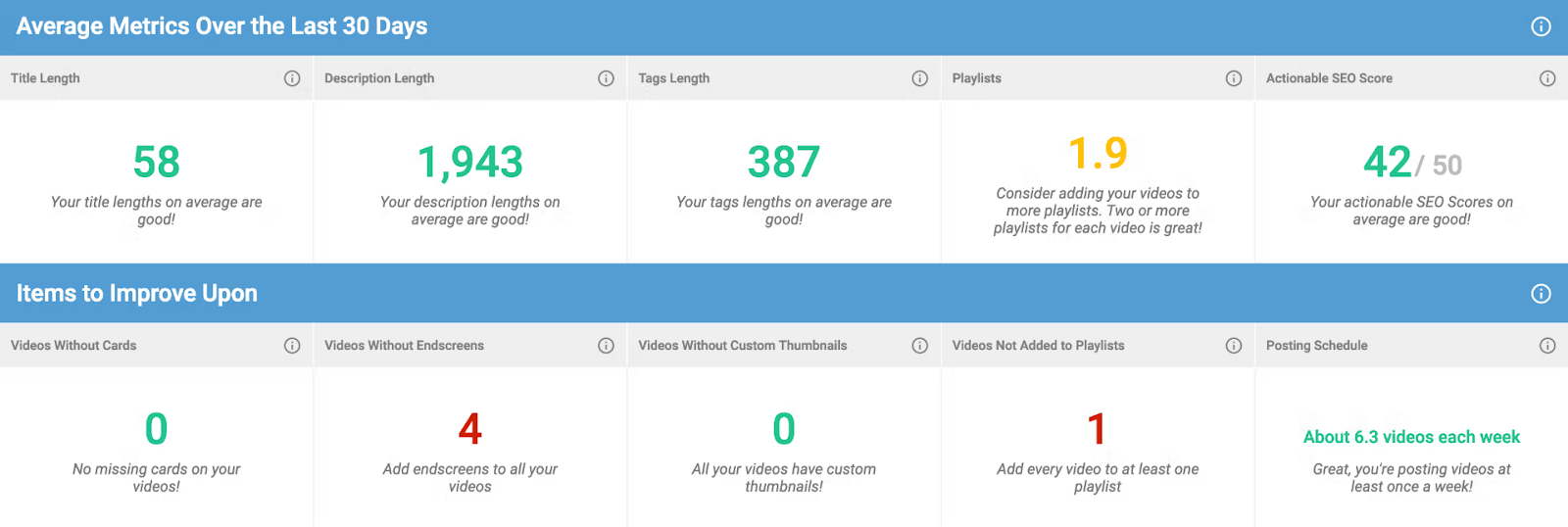
TubeBuddy, on the other hand, gives you some extra productivity tools like bulk editing and scheduling features.
These tools help me simplify my workflow and save a lot of time on repetitive tasks.
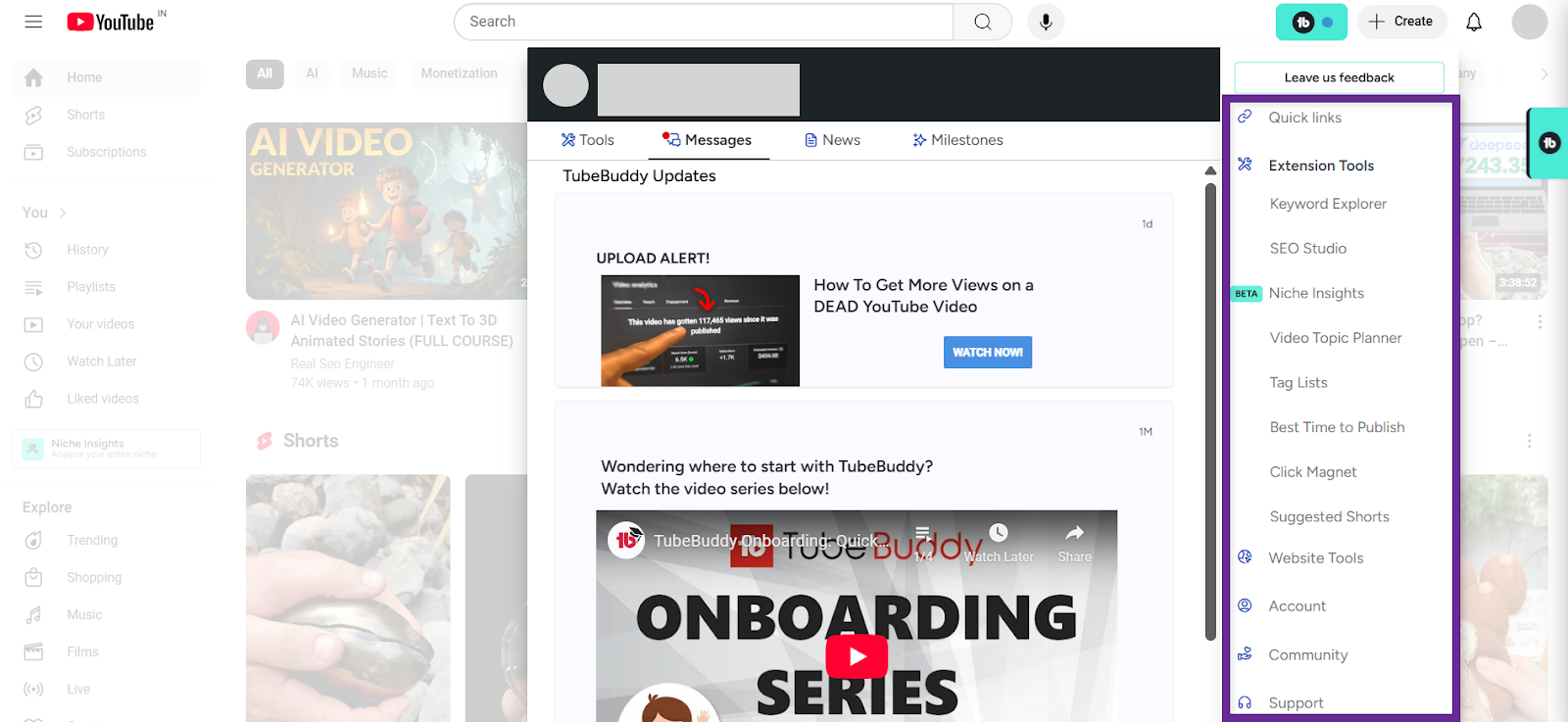
Pricing and Free vs. Paid Features
VidIQ offers a free plan that gives you basic metrics. And while its deep analytics and advanced features come at a higher price point, I’d say they are well worth the investment if you’re a serious YouTube content creator.
And if you’re still on the fence, there’s a 7 day free trial so you can test it out first and then decide whether you want to invest in it or not.

Whereas TubeBuddy’s free version is more generous. It gives you access to many useful features at no cost.
Its paid plans also start at a lower price point and give you access to additional tools like A/B testing and bulk editing. I think it’s great if you’re on a budget and still want a full suite of optimization tools.
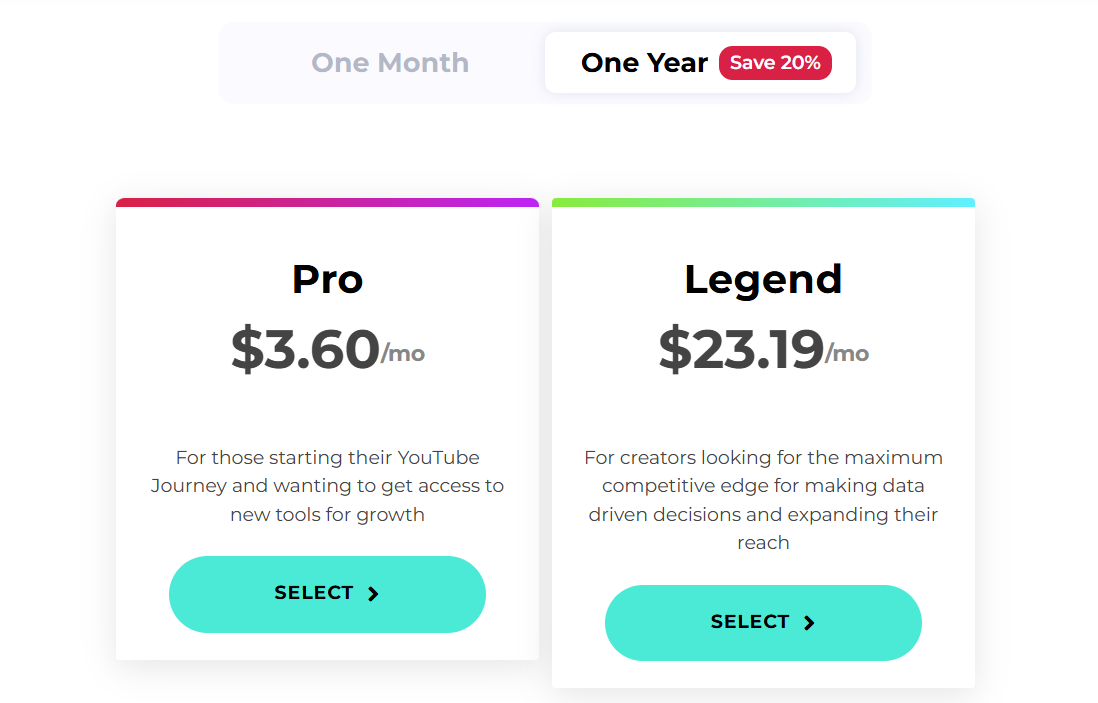
Pros and Cons Summary
| Tool | Pros | Cons |
|---|---|---|
| VidIQ | ✅Detailed metrics that show search volume and competition ✅Advanced competitor insights for strategic planning ✅Accurate SEO scores and suggestions for optimizing titles and descriptions ✅Data-rich interface that makes data easy to read | ❌ Can overwhelm beginners with extensive data ❌Higher cost for advanced features compared to basic plans |
| TubeBuddy | ✅Dual scoring system (weighted and unweighted) for a tailored view ✅Integrated, user-friendly interface within YouTube Studio ✅A/B testing and SEO Studio ✅Budget-friendly pricing with a generous free plan | ❌ Provides less detailed keyword data than VidIQ ❌ Offers basic competitor insights that may lack depth if you’re a pro |
What Best is What Works for You
Having used both tools, it’s hard for me to say that one is better than the other. If I have to say it in a sentence, use VidIQ if you’re an experienced creator and need detailed, data-driven insights. Or else, if you’re a beginner, go for TubeBuddy as it is easy to use and guides you at every step.
I have a few more guides to help you find the right tools for your keyword research needs:
↳ Best tools for Facebook Ads keyword research
↳ Semrush or Ahrefs, see what is better for keyword research and overall SEO
↳ Find out whether KeySearch or KWFinder is the right keyword research tool for you
Frequently Asked Questions
TubeBuddy offers a dual scoring system but provides less detailed keyword metrics compared to VidIQ. Its competitor insights remain basic and may not satisfy advanced users. Extra features can clutter the interface for those needing laser-focused data. It simplifies workflow but may not deliver the deep analytics competitive channels require.
TubeBuddy does not directly increase subscribers. It equips users with optimization tools that improve video metadata, thumbnails, and descriptions. These enhancements boost video performance and visibility, which can gradually lead to subscriber growth. However, high-quality content remains essential for converting views into subscribers.
VidIQ cannot delete a YouTube channel. It provides detailed analytics and keyword insights through YouTube’s API without altering any channel settings. The tool solely displays data and recommendations for optimization, ensuring that channel content remains untouched while offering actionable insights.
Yes, both tools can run concurrently. VidIQ offers detailed keyword data and competitor insights, while TubeBuddy provides user-friendly optimization and productivity features. Combining them delivers a comprehensive approach to YouTube SEO, allowing users to leverage the strengths of both platforms for enhanced channel performance.
VidIQ remains one of the best options for detailed keyword analytics and competitor tracking. While alternatives offer additional features, none consistently deliver the same level of comprehensive data and accuracy for YouTube SEO. Users seeking extensive keyword research and precise analytics will find VidIQ hard to beat in competitive environments.
VidIQ and VidIQ offer tiered pricing models with free plans and affordable paid options. VidIQ’s advanced features cost more, typically ranging from around $7.50 to $19 per month, while TubeBuddy’s plans start as low as $2.25 per month. Both platforms provide cost-effective solutions for varying channel sizes and needs.
VidIQ proves valuable for detailed keyword research and comprehensive competitor insights. Its robust analytics help refine content strategy and boost video performance. Although premium features come at a higher cost, the tool delivers reliable data that significantly enhances YouTube SEO. Users seeking precise, actionable insights will find VidIQ a worthwhile investment.
Yes, numerous YouTubers use VidIQ daily. The tool provides accurate analytics, in-depth keyword research, and actionable competitor insights. Creators across various channel sizes rely on VidIQ to refine their content strategy and improve SEO performance, thanks to its reputation for delivering reliable, data-driven recommendations.
TubeBuddy earns trust with its reliable integration into YouTube Studio and consistent performance. It offers a user-friendly interface and effective optimization tools that enhance video metadata and workflow. Many creators depend on TubeBuddy for practical, actionable insights, and its longstanding reputation and positive reviews reinforce its reliability.

